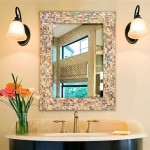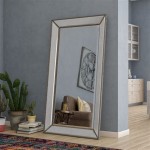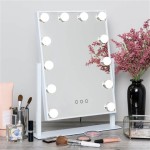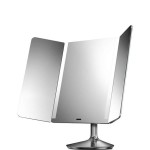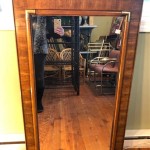How to Remove a Mirror That's Glued to the Wall
Removing a mirror that is glued to a wall can be a challenging task, especially if the adhesive is strong. However, with the right tools and techniques, it is possible to remove the mirror without damaging the wall. This article will guide you through the process, outlining important steps to ensure a smooth and successful removal.
Tools and Materials
Before you begin, gather the necessary tools and materials:
- A utility knife or razor blade
- A putty knife or scraper
- A hairdryer or heat gun
- A cleaning cloth
- A bucket of warm water
- Dish soap or a specialized adhesive remover
- Safety glasses
- Gloves (optional)
- A drop cloth or old towel to protect the floor
It is crucial to prioritize safety during this process. Wear safety glasses to protect your eyes from flying debris, and consider gloves to prevent hand irritation from the adhesive. Place a drop cloth or old towel beneath the mirror to catch any falling pieces and protect the floor.
Removing the Mirror
The first step involves carefully separating the mirror from the wall. This can be achieved using a variety of techniques:
1. Using Heat
Applying heat to the adhesive can help to soften it and make it easier to remove. Use a hairdryer or heat gun, directing the heat towards the edge of the mirror. Be careful not to overheat the mirror, as this could cause it to crack. Apply heat for a few minutes, then try to gently pry the mirror away from the wall using a putty knife or scraper.
2. Using a Utility Knife or Razor Blade
If heat does not work, you can use a utility knife or razor blade to score the adhesive along the edges of the mirror. This will help to weaken the bond and make it easier to remove. Be extremely careful when using a sharp tool. Do not apply excessive pressure, as you could damage the mirror or wall.
3. Using an Adhesive Remover
If the mirror is still stuck, you can try using a specialized adhesive remover. Apply the remover according to the manufacturer's instructions, and allow it to sit for a few minutes. Then, using a putty knife or scraper, gently pry the mirror away from the wall.
Cleaning up the Adhesive
Once the mirror is removed, you will need to clean up any remaining adhesive. There are several methods for removing adhesive residue:
1. Using a Putty Knife or Scraper
For stubborn adhesive residue, you can use a putty knife or scraper to remove it. Be careful not to scratch the wall. You may need to apply heat to soften the remaining adhesive for easier removal.
2. Using a Cleaning Cloth and Dish Soap
For smaller adhesive residue, you can use a cleaning cloth and dish soap or a specialized adhesive remover. Apply the cleaning solution to the adhesive, allow it to sit for a few minutes, then use a cleaning cloth to wipe it away.
3. Using a Solvent
If the adhesive is particularly stubborn, you can try using a solvent, such as acetone or mineral spirits. Apply the solvent to a cleaning cloth and gently rub it over the adhesive. Be sure to test the solvent on a small, inconspicuous area first to ensure it does not damage the wall paint.
Dealing with Damaged Walls
Removing a mirror that is glued to a wall can sometimes result in damage to the wall. This may include scratches, dents, or even holes. If you encounter any damage, you can repair it using the following methods:
1. Using Spackle or Joint Compound
For minor scratches or dents, you can use spackle or joint compound to fill them in. Apply a thin layer, smooth it out, let it dry, and then sand it down to create a seamless finish.
2. Using a Patch
For larger holes, you can use a patch. Select a patch that is slightly larger than the hole, apply adhesive to the back of the patch, and press it firmly into place. Allow the adhesive to dry completely, then smooth out any edges with spackle or joint compound.
Remember, removing a mirror glued to the wall requires patience and careful handling. By following these steps and using the appropriate tools and materials, you can remove the mirror without damaging the wall and prepare it for a new decorative element or a fresh coat of paint.

How To Remove A Mirror Glued The Wall Forbes Home

How To Remove A Wall Mirror 11 Steps With Pictures Wikihow

How To Remove A Wall Mirror 11 Steps With Pictures Wikihow

How To Remove A Bathroom Mirror Lowe S

How To Remove A Large Mirror That S Glued The Wall Emerging Home

How To Safely And Easily Remove A Large Bathroom Builder Mirror From The Wall Site Title

How To Remove Mirror Off Wallsafely

How To Safely And Easily Remove A Large Bathroom Builder Mirror From The Wall Site Title

Removing A Glued On Mirror From Wall

How To Remove A Wall Mirror Diy Weekend Project Antique Rustic Mirrors

